Q&A With the Headliners of Archifest's Women & Architecture
To celebrate International Women's Day, we revisit an interview with Singapore's leading female architects
One of the most exciting things that happened in Archifest 2017 was the Conversation, Women & Architecture: Conversations on the Discipline. Chaired by architecture professor Lillian Chee, who worked on the architectural film 03-Flats and teaches at the Department of Architecture, National University of Singapore, this panel discussed the (female) architect’s equitable rights and access to options, work-life balance and the current social-professional scene.
Houzz asked Chee and two of the panelists, architects Angelene Chan and Belinda Huang about their path in architecture.
Houzz asked Chee and two of the panelists, architects Angelene Chan and Belinda Huang about their path in architecture.
The Tembusu, photo courtesy of ARC Studio Architecture + Urbanism
Would you say that at this point in your career, you have your dream job? How easy or difficult was it to get to where you are now?
I would say ‘yes’ that I do have a dream job in that it continues to allow me to develop myself in new areas that interest me. In recent years, I have also been able to make contributions to the education sector as well as support Christian organisations in various ways.
I joined RSP Architects Planners and Engineers right after graduation from The Bartlett School of Architecture, UCL London. I spent many years there as part of the design team where I also picked up the skills in the design development stage, before moving on to the project team to gain the professional experience necessary to manage the project contract at construction stage. It was in RSP that I reconnected with Khoo Peng Beng whom I had met briefly in NUS and we later got married.
It seemed natural to venture out to start our own practice from one of the bedrooms in our first home after the birth of our first child. It was hard work, but I am truly blessed with a husband who readily shared the parenting duties so I never felt that it was one-sided. It has been an amazing journey of shared visions and being able to implement them together. We really do work as a team from design to implementation… and after 20 years, we still do!
What was the most sexist/discriminating thing you experienced in your course of work? Case in point, Charlotte Perriand in Le Corbusier’s office.
When someone asked me if I did the administrative work when I introduce ourselves as a husband-and-wife architectural practice! Nowadays, I still occasionally get some requests for Mr Khoo, the designer, to attend design meetings. That’s when I smoothly remind them that I too can design hahahaha!
Would you say that at this point in your career, you have your dream job? How easy or difficult was it to get to where you are now?
I would say ‘yes’ that I do have a dream job in that it continues to allow me to develop myself in new areas that interest me. In recent years, I have also been able to make contributions to the education sector as well as support Christian organisations in various ways.
I joined RSP Architects Planners and Engineers right after graduation from The Bartlett School of Architecture, UCL London. I spent many years there as part of the design team where I also picked up the skills in the design development stage, before moving on to the project team to gain the professional experience necessary to manage the project contract at construction stage. It was in RSP that I reconnected with Khoo Peng Beng whom I had met briefly in NUS and we later got married.
It seemed natural to venture out to start our own practice from one of the bedrooms in our first home after the birth of our first child. It was hard work, but I am truly blessed with a husband who readily shared the parenting duties so I never felt that it was one-sided. It has been an amazing journey of shared visions and being able to implement them together. We really do work as a team from design to implementation… and after 20 years, we still do!
What was the most sexist/discriminating thing you experienced in your course of work? Case in point, Charlotte Perriand in Le Corbusier’s office.
When someone asked me if I did the administrative work when I introduce ourselves as a husband-and-wife architectural practice! Nowadays, I still occasionally get some requests for Mr Khoo, the designer, to attend design meetings. That’s when I smoothly remind them that I too can design hahahaha!
Siena, photo courtesy of ARC Studio Architecture + Urbanism
Have you ever used your femininity to your advantage?
I can remember the time I was pregnant with my first child and was going down to the (construction) site right up to the ninth month of my pregnancy. The kind contractor assigned one worker to be my personal escort the entire time; I would have the best chair and a cup of hot Milo at the meeting room and the best thing they ever did for me was to chemical-wash the portable toilets just before I was to arrive. The kind contractor did all this for me without even me asking for it. I think he was more worried for my safety… I was bounding up and down the stairs doing my inspection with a huge belly. I must have been a sight to behold!
Do you consider the profession as still being a ‘man’s world’? How can we level the playing field for men and women architects?
I believe that there is still a tinge of it, but once you have attained a certain level of experience and have found confidence in your work, that levels the playing field. Generally, the builders and developers are a much younger set now and have a more open outlook in life so I really don’t see much discrimination here in Singapore anymore.
What would you tell a young girl who dreams of becoming the next Zaha Hadid, about what to expect in her pursuit of that dream?
Find the authentic you and go be the best you can be!
Have you ever used your femininity to your advantage?
I can remember the time I was pregnant with my first child and was going down to the (construction) site right up to the ninth month of my pregnancy. The kind contractor assigned one worker to be my personal escort the entire time; I would have the best chair and a cup of hot Milo at the meeting room and the best thing they ever did for me was to chemical-wash the portable toilets just before I was to arrive. The kind contractor did all this for me without even me asking for it. I think he was more worried for my safety… I was bounding up and down the stairs doing my inspection with a huge belly. I must have been a sight to behold!
Do you consider the profession as still being a ‘man’s world’? How can we level the playing field for men and women architects?
I believe that there is still a tinge of it, but once you have attained a certain level of experience and have found confidence in your work, that levels the playing field. Generally, the builders and developers are a much younger set now and have a more open outlook in life so I really don’t see much discrimination here in Singapore anymore.
What would you tell a young girl who dreams of becoming the next Zaha Hadid, about what to expect in her pursuit of that dream?
Find the authentic you and go be the best you can be!
Lilian Chee, Assistant Professor, Department of Architecture, National University of Singapore
Houzz: When did you decide that you wanted to become an architect?
Lillian Chee: When I was in secondary school. My parents had architect friends whom I spoke to.
Why did you want to become an architect?
I idealistically thought it was about having the freedom to draw and create!
Who were your role models; and did you find it hard finding a female architect to emulate?
I wasn’t looking for female role models in school. Like the other students, I was more captivated by the exciting architectural projects happening on the other side of the world. My first female role models were my teachers in architecture school at NUS – Dr Gulsum Baydar and Dr Pinna Indorf. Then when I went on to do my masters and doctoral studies at UCL (University College London) in the UK, I was fortunate enough to meet my two mentors and friends – Prof. Jane Rendell and Prof. Barbara Penner. They were all really tough teachers! I enjoyed the work of Elizabeth Diller but my teachers had a greater influence on me. They taught me the beauty (and pain) of thinking independently. It was liberating.
Houzz: When did you decide that you wanted to become an architect?
Lillian Chee: When I was in secondary school. My parents had architect friends whom I spoke to.
Why did you want to become an architect?
I idealistically thought it was about having the freedom to draw and create!
Who were your role models; and did you find it hard finding a female architect to emulate?
I wasn’t looking for female role models in school. Like the other students, I was more captivated by the exciting architectural projects happening on the other side of the world. My first female role models were my teachers in architecture school at NUS – Dr Gulsum Baydar and Dr Pinna Indorf. Then when I went on to do my masters and doctoral studies at UCL (University College London) in the UK, I was fortunate enough to meet my two mentors and friends – Prof. Jane Rendell and Prof. Barbara Penner. They were all really tough teachers! I enjoyed the work of Elizabeth Diller but my teachers had a greater influence on me. They taught me the beauty (and pain) of thinking independently. It was liberating.
A poster of Chee’s 03-Flats
Would you say that at this point in your career, you have your dream job? How easy or difficult was it to get to where you are now?
I am an architecture academic. It is a job that demands commitment and passion, like many other jobs. It has different demands from professional practice. It requires me to find a distinctive position and to operate intellectually and professionally from that position. Teaching design is very different from doing research. You have to use different skills. Teaching design is time consuming and tiring. You need a lot of extra energy to move on to do research. Currently, the professionalisation of academia requires that faculty show research excellence over teaching. It is tough because you can’t really cut corners in teaching if you want to do this properly. So you end up burning both ends of the candle. It’s like holding two jobs.
What was the most sexist/discriminating thing you experienced in your course of work? Case in point, Charlotte Perriand in Le Corbusier’s office.
I was interviewed in my gap year by a director of a local firm. I was with my then-boyfriend Peter Sim from FARM (now spouse). Throughout the interview, the architect ignored me and talked to Peter for an hour. I also hear from my female students that they sometimes face subtle discrimination as interns, for example, not being given the same challenging tasks in the office as their male peers. This kind of sexism is certainly embedded in the discipline, but it is also more prevalent in Asia.
Have you ever used your femininity to your advantage?
Women in architecture constantly struggle to establish their legitimacy and position. Many would never contemplate using their differences to gain an advantage. But it is also questionable whether women architects should not voice their disadvantage in the profession. If we do not do so, whatever we face will become the legacy for the next generations. As a collective, we do have a social responsibility to improve the well-being of upcoming women architects.
Do you consider the profession as still being a ‘man’s world’? How can we level the playing field for men and women architects?
It is, even if we don’t want to admit it to be such. Women architects inherently have to cope with personal issues like family, which they cannot bring openly to the workplace. And architecture is such a competitive discipline which is very demanding on one’s time. Something must give. I do not know if we can level the playing field – it requires more than a few people putting their hands up and being honest about their difficulties. Those who do so may be perceived as being weak. We need to change our value system. We need to understand that the practice of architecture is not insulated from everyday life and its demands. It’s a structural problem that’s deeply embedded in the discipline.
What would you tell a young girl who dreams of becoming the next Zaha Hadid, about what to expect in her pursuit of that dream?
Go for it! But know it will come with substantial personal costs.
Would you say that at this point in your career, you have your dream job? How easy or difficult was it to get to where you are now?
I am an architecture academic. It is a job that demands commitment and passion, like many other jobs. It has different demands from professional practice. It requires me to find a distinctive position and to operate intellectually and professionally from that position. Teaching design is very different from doing research. You have to use different skills. Teaching design is time consuming and tiring. You need a lot of extra energy to move on to do research. Currently, the professionalisation of academia requires that faculty show research excellence over teaching. It is tough because you can’t really cut corners in teaching if you want to do this properly. So you end up burning both ends of the candle. It’s like holding two jobs.
What was the most sexist/discriminating thing you experienced in your course of work? Case in point, Charlotte Perriand in Le Corbusier’s office.
I was interviewed in my gap year by a director of a local firm. I was with my then-boyfriend Peter Sim from FARM (now spouse). Throughout the interview, the architect ignored me and talked to Peter for an hour. I also hear from my female students that they sometimes face subtle discrimination as interns, for example, not being given the same challenging tasks in the office as their male peers. This kind of sexism is certainly embedded in the discipline, but it is also more prevalent in Asia.
Have you ever used your femininity to your advantage?
Women in architecture constantly struggle to establish their legitimacy and position. Many would never contemplate using their differences to gain an advantage. But it is also questionable whether women architects should not voice their disadvantage in the profession. If we do not do so, whatever we face will become the legacy for the next generations. As a collective, we do have a social responsibility to improve the well-being of upcoming women architects.
Do you consider the profession as still being a ‘man’s world’? How can we level the playing field for men and women architects?
It is, even if we don’t want to admit it to be such. Women architects inherently have to cope with personal issues like family, which they cannot bring openly to the workplace. And architecture is such a competitive discipline which is very demanding on one’s time. Something must give. I do not know if we can level the playing field – it requires more than a few people putting their hands up and being honest about their difficulties. Those who do so may be perceived as being weak. We need to change our value system. We need to understand that the practice of architecture is not insulated from everyday life and its demands. It’s a structural problem that’s deeply embedded in the discipline.
What would you tell a young girl who dreams of becoming the next Zaha Hadid, about what to expect in her pursuit of that dream?
Go for it! But know it will come with substantial personal costs.
Angelene Chan, CEO, DP Architects
Houzz: When did you decide that you wanted to become an architect?
Angelene Chan: By the time I was 10, I knew I wanted to be an architect. I used to enjoy watching my uncle, a draftsman, draw with Rotring ink pens, using the T-square and various fascinating drawing tools. I found myself intrigued by the power of the line. How the line could represent walls, spaces, materials – with everyone understanding what the line represents. At age 12, I was very fortunate that my parents entrusted the renovation of their house to me. They gave me the freedom to follow my creative curiosity, and that sparked my passion for architecture.
Why did you want to become an architect? Who were your role models; and did you find it hard finding a female architect to emulate?
Being an architect allows me to live creatively and to have the privilege of sculpting the landscape and moulding the environment we live in.
During the formative years of my career, I did not have the opportunity to work with many female architects. That aside, I did not deliberately seek out role models, male or female, to emulate. Instead, I observed and learnt from many people around me, people who inspire me with their good works, and more importantly, with their values and their behaviour.
Houzz: When did you decide that you wanted to become an architect?
Angelene Chan: By the time I was 10, I knew I wanted to be an architect. I used to enjoy watching my uncle, a draftsman, draw with Rotring ink pens, using the T-square and various fascinating drawing tools. I found myself intrigued by the power of the line. How the line could represent walls, spaces, materials – with everyone understanding what the line represents. At age 12, I was very fortunate that my parents entrusted the renovation of their house to me. They gave me the freedom to follow my creative curiosity, and that sparked my passion for architecture.
Why did you want to become an architect? Who were your role models; and did you find it hard finding a female architect to emulate?
Being an architect allows me to live creatively and to have the privilege of sculpting the landscape and moulding the environment we live in.
During the formative years of my career, I did not have the opportunity to work with many female architects. That aside, I did not deliberately seek out role models, male or female, to emulate. Instead, I observed and learnt from many people around me, people who inspire me with their good works, and more importantly, with their values and their behaviour.
Sunray Woodcraft Construction, photo courtesy of DP Architects
Would you say that at this point in your career, you have your dream job? How easy or difficult was it to get to where you are now?
Yes, being an architect is definitely a dream job. The job itself is so multifaceted – from sketching on the drawing board, to presentations in a board room, to inspection on a construction site. There is never a dull moment. Everyday is different. I get to work in different cultures and climates, and to meet so many different people. It is a most enriching career.
My career path has been smooth. Climbing the proverbial career ladder was never a goal of mine. I don’t think about it at all. I love what I do and I work hard. I am fortunate to have the strong support of many people along my professional journey, and that has helped me tremendously to grow.
Would you say that at this point in your career, you have your dream job? How easy or difficult was it to get to where you are now?
Yes, being an architect is definitely a dream job. The job itself is so multifaceted – from sketching on the drawing board, to presentations in a board room, to inspection on a construction site. There is never a dull moment. Everyday is different. I get to work in different cultures and climates, and to meet so many different people. It is a most enriching career.
My career path has been smooth. Climbing the proverbial career ladder was never a goal of mine. I don’t think about it at all. I love what I do and I work hard. I am fortunate to have the strong support of many people along my professional journey, and that has helped me tremendously to grow.
Sunray Woodcraft Construction, photo courtesy of DP Architects
What was the most sexist/discriminating thing you experienced in your course of work? Case in point, Charlotte Perriand in Le Corbusier’s office.
Catcalling on a construction site in Australia when I first started working. It was my very first time on a construction site and the workers did not realise I was the architect. I have not experienced any other sexist encounters or discrimination since.
Have you ever used your femininity to your advantage?
No. I have never found it necessary. Speaking from my own experience, I find that as long as you know your work well, speak your mind when you have an opinion, be firm when the situation calls for it, you will be respected.
What was the most sexist/discriminating thing you experienced in your course of work? Case in point, Charlotte Perriand in Le Corbusier’s office.
Catcalling on a construction site in Australia when I first started working. It was my very first time on a construction site and the workers did not realise I was the architect. I have not experienced any other sexist encounters or discrimination since.
Have you ever used your femininity to your advantage?
No. I have never found it necessary. Speaking from my own experience, I find that as long as you know your work well, speak your mind when you have an opinion, be firm when the situation calls for it, you will be respected.
Temasek Club, photo courtesy of DP Architects
Do you consider the profession as still being a ‘man’s world’? How can we level the playing field for men and women architects?
Yes. The construction industry is still largely male-dominated. You find few women among the contractors, engineers, consultants, especially in management positions.
Compared to men, us women tend to be harder on ourselves. I have seen women refuse promotions because they question themselves if they were good enough or if they were ready; men tend not to doubt themselves as much. Women take it upon themselves to juggle work, home life and parenting; but sometimes it is just not possible to keep so many balls in the air. Never be afraid to ask for support. At DP Architects, men and women are given equal opportunities. We encourage our female colleagues to boldly chase their career goals and not shortchange themselves. When they want to take some time off to raise a family, we are open to arrangements that allow them to do that without sacrificing their career.
Do you consider the profession as still being a ‘man’s world’? How can we level the playing field for men and women architects?
Yes. The construction industry is still largely male-dominated. You find few women among the contractors, engineers, consultants, especially in management positions.
Compared to men, us women tend to be harder on ourselves. I have seen women refuse promotions because they question themselves if they were good enough or if they were ready; men tend not to doubt themselves as much. Women take it upon themselves to juggle work, home life and parenting; but sometimes it is just not possible to keep so many balls in the air. Never be afraid to ask for support. At DP Architects, men and women are given equal opportunities. We encourage our female colleagues to boldly chase their career goals and not shortchange themselves. When they want to take some time off to raise a family, we are open to arrangements that allow them to do that without sacrificing their career.
Wisma Atria, photo courtesy of DP Architects
What would you tell a young girl who dreams of becoming the next Zaha Hadid, about what to expect in her pursuit of that dream?
We are fortunate because Singapore embraces meritocracy. I would tell her to aim for the stars. Like Lee Kuan Yew said: “… look at that horizon, follow that rainbow, go ride it.” Don’t let anything, least of all your gender, hold you back in your pursuit of that dream.
What would you tell a young girl who dreams of becoming the next Zaha Hadid, about what to expect in her pursuit of that dream?
We are fortunate because Singapore embraces meritocracy. I would tell her to aim for the stars. Like Lee Kuan Yew said: “… look at that horizon, follow that rainbow, go ride it.” Don’t let anything, least of all your gender, hold you back in your pursuit of that dream.
Wisma Atria, photo courtesy of DP Architects
Women & Architecture: Conversations on the Discipline was held on 12 October, 2017 at the Singapore Institute of Architects.
Your turn
Which female designer or designers have inspired you most? Share your answers in the Comments.
More
Two Irish Women Win the 2020 Pritzker Architecture Prize
‘Breaking Ground’ Celebrates a Century of Women Architects
Women & Architecture: Conversations on the Discipline was held on 12 October, 2017 at the Singapore Institute of Architects.
Your turn
Which female designer or designers have inspired you most? Share your answers in the Comments.
More
Two Irish Women Win the 2020 Pritzker Architecture Prize
‘Breaking Ground’ Celebrates a Century of Women Architects



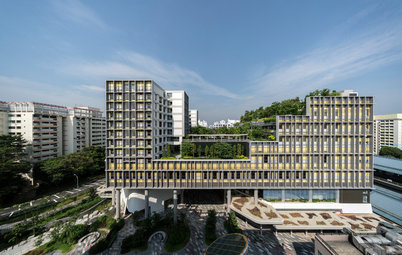
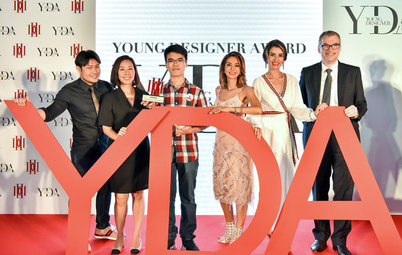

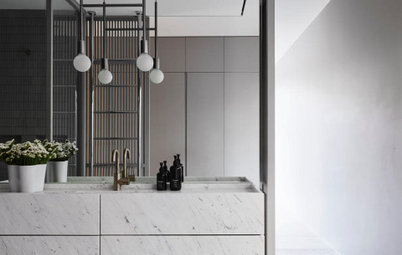
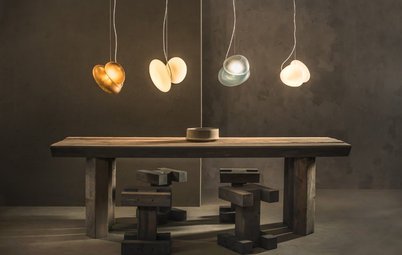
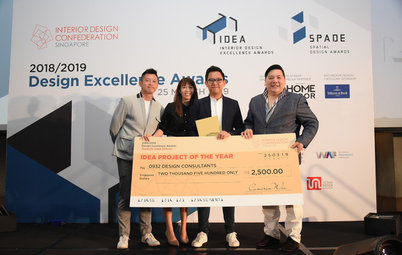

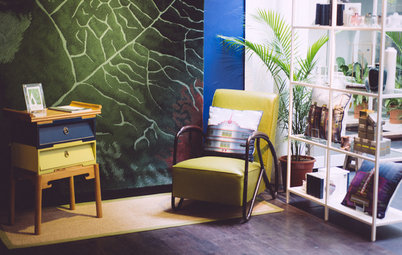

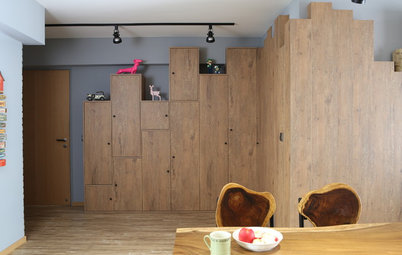
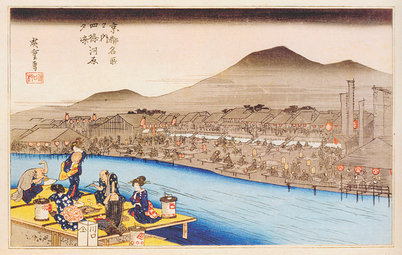
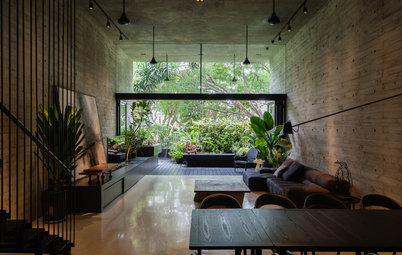
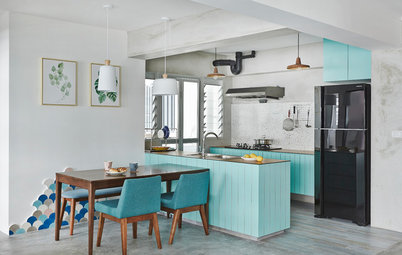
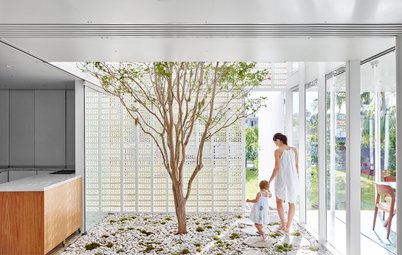
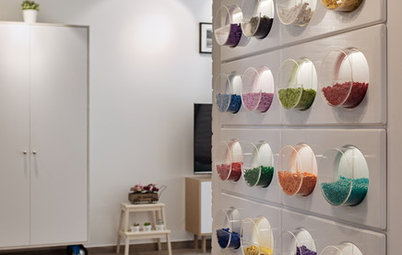
Houzz: When did you decide that you wanted to become an architect?
Belinda Huang: Right after my A levels when I had to consider what I wanted to study at the National University of Singapore (NUS).
Why did you want to become an architect? Who were your role models; and did you find it hard finding a female architect to emulate?
I loved both the arts and sciences, but with my father’s advice I narrowed it down to architecture which I thought was the best of both worlds. Dad was a civil and structural engineer and partner at Ove Arup and Partners, Singapore. Back in those days, it was hard to really get an up-close and personal understanding of the prominent architects as compared to our TED Talk generation. I had works of architects I liked but not really as a role model.